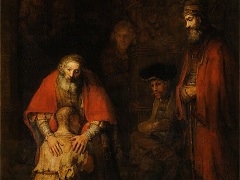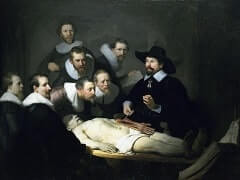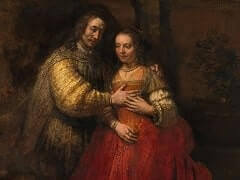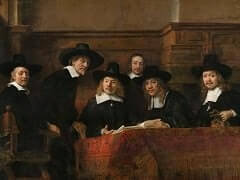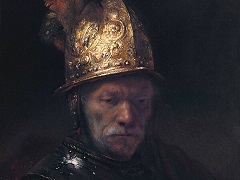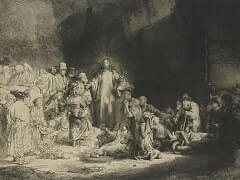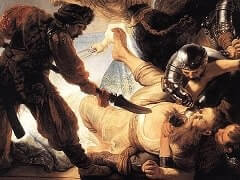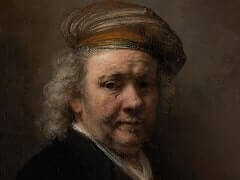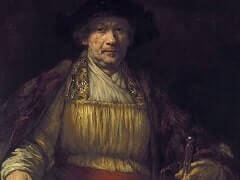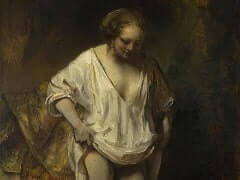The Prodigal Son in the Brothel, 1635 by Rembrandt
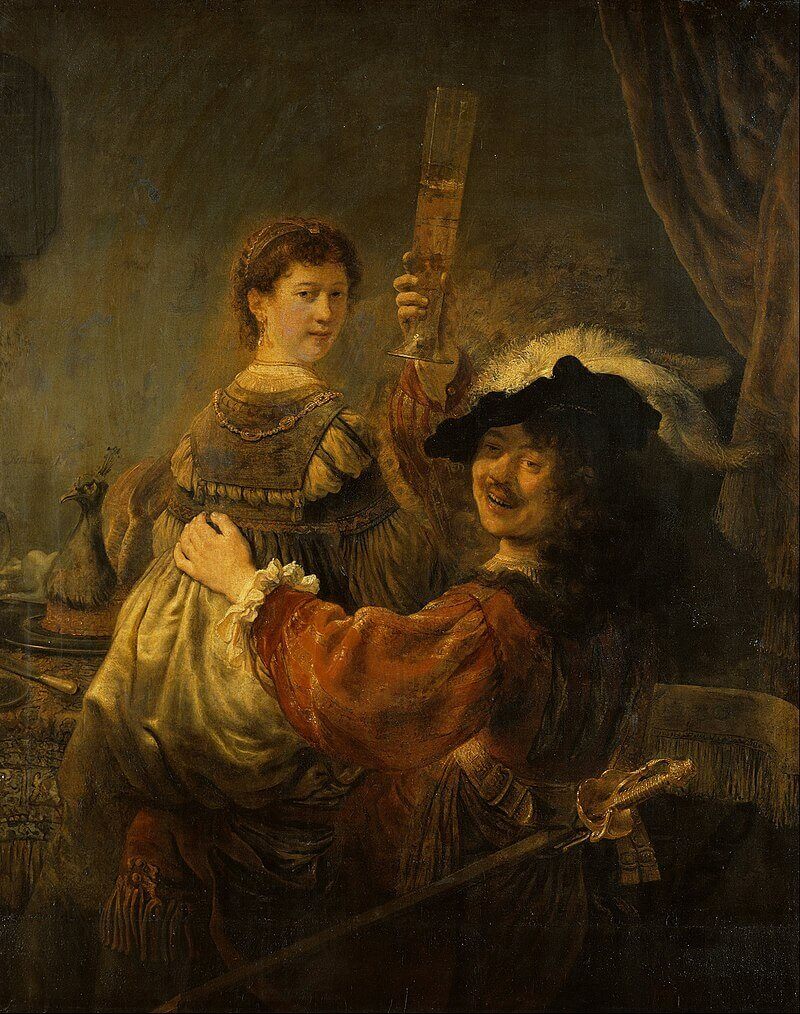
This delightful painting is housed in Dresden's Gemaldegalerie and dates from 1635. The Prodigal Son in the Brothel portrays two people who had been identified as Rembrandt himself and his wife Saskia. In the Protestant contemporary world, the theme of the prodigal son was a frequent subject for works of art due to its moral background.
A portrayal of utter happiness, it cheerfully expresses Rembrandt's joy in his marriage. He holds Saskia on his knee and raises a glass to us. In the painting, Saskia sits on the lap of a foppishly dressed Rembrandt, who gaily holds up a flagon of ale as he twists to offer a silly grin out of the picture. Saskia's expression betrays a certain embarrassment at the rather vulgar laughter of her husband. The scene has also been viewed as an interpretation of the parable of the prodigal son, who squandered his father's fortune on improper revelry. However, the genuine happiness expressed by the painting seems to contradict any possible intention to moralize.
The Prodigal Son in the Brothel comes almost as a shock at this point in Rembrandt's artistic career. There has been a general increase in solemnity, a heightening of the drama, not always by obvious means, and then he paints this incredibly rumbustious, swashbuckling portrait. Considering the happy quality of the picture, and how Saskia appears confident and elegant - she is just this in the Portrait of Saskia in a Straw Hat - the conclusion that Rembrandt was going through a happy and successful period of his life can hardly be avoided. Extravagant, almost flamboyant, the artist has completely dispelled the introspective character of the prematurely aged man we have been coming to expect already.



